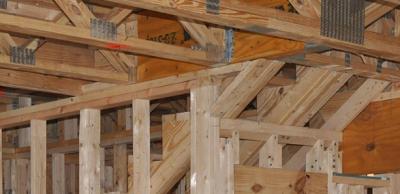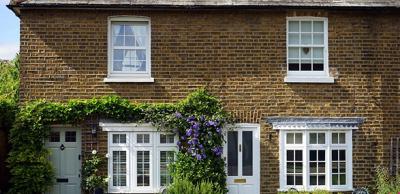How to get it right: Don’t convert your loft like this!
You may have read How to get it right - roof truss "alterations"? The article explained the serious pitfalls of attempting to alter a trussed roof to create additional floor space.
Because of their design, any removal of the central “W” where most of the loads are distributed, can have disastrous consequences.
Imagine our surprise when we received this photo within hours of the article being issued:

Apologies for the clarity of the photo but we think you can see what’s been done to convert the loft to create an office/workshop.
Thankfully all of the truss chords were still in place, but in creating the habitable space, which also included a bed at the other end of the roof, a makeshift ladder had been formed for access, boarding placed over the ceiling chords and there was no insulation anywhere!
The tenant had no concerns for their safety until it was pointed out just how dangerous the “conversion” actually was. Aside from the structural issues of additional weight on the roof trusses, there are the unimaginable consequences of a house fire.
Read: Building a loft conversion
How to get it right
Loft conversions need upgrading work to create a 30 minute fire protected staircase enclosure which includes interlinked smoke detection. This provides greater protection to occupants, particularly those at the new second floor where all of the hot smoke and gasses would rise if the protection wasn’t in place.
This was a council-owned property so the Housing team was able to ensure that the illegal use stopped. It was returned to being a roof space and went back to storing the odd suitcase and Christmas tree.
Find out more
Involved a loft conversion project? Visit Building a loft conversion for advice and a video on building regulations and information on skylights, storage space and more.
Browse our 'How to get it right' articles
Please Note: Every care was taken to ensure the information was correct at the time of publication. Any written guidance provided does not replace the user’s professional judgement. It is the responsibility of the dutyholder or person carrying out the work to ensure compliance with relevant building regulations or applicable technical standards.
This article was reviewed and updated on 10 August 2023
Sign up to the building bulletin newsletter
Over 48,000 construction professionals have already signed up for the LABC Building Bulletin.
Join them and receive useful tips, practical technical information and industry news by email once every 6 weeks.
Subscribe to the Building Bulletin




Comments
Ychwanegu sylw newydd